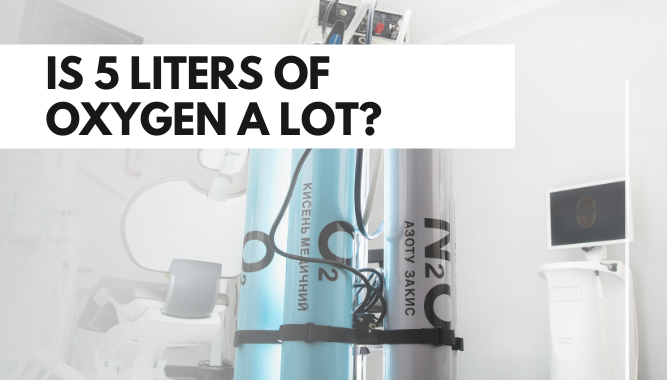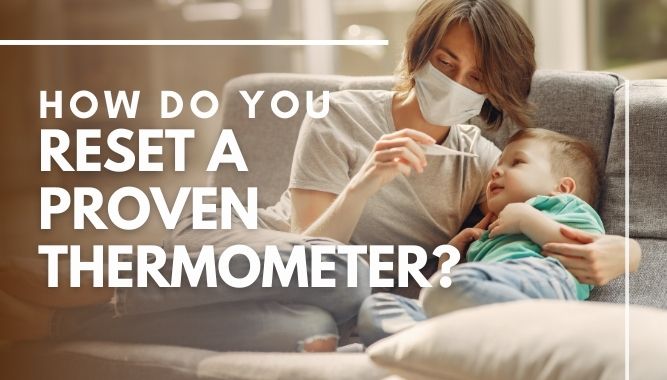The body’s primary fuel is oxygen (O2). Every organ needs oxygen to function correctly.
Your organs will not function if your body’s O2 levels drop, just like a car’s gas tank.
You won’t be able to think critically. Your heart won’t be capable of pumping well. Your kidneys won’t be able to cleanse and clean your blood adequately, and so on.
If your O2 levels are too low for too long, your organs might be irreversibly harmed or even die, so we need to give medical oxygen then.
Is 5 Liters of Oxygen A Lot?
It is not a lot, but somewhere on the middle side, as usually, 0.5 to 40L/min rate is standard among hypoxic patients to breathe normally for long.
PS – One can also give up to 60L/min of medical oxygen for a critical one.
Oxygen requirements and the limitations of flow rates:
Human life requires oxygen, a gas around us that we breathe.
- Some persons with respiratory problems cannot obtain adequate oxygen through natural means.
- They may require oxygen treatment or supplementary oxygen.
- People who undergo oxygen treatment experience increased energy, sleep, and a higher quality of life.
Who would benefit from oxygen therapy?
People who can’t acquire sufficient oxygen are administered oxygen treatment.
And this is frequently due to lung diseases that hinder the lungs from absorbing oxygen, such as:
- COPD stands for chronic obstructive pulmonary disease (COPD)
- Pneumonia
- Asthma
- Heart failure in infants, bronchopulmonary dysplasia, undeveloped lungs
- Cystic fibrosis is a disease that affects the lungs.
- Apnea (sleep deprivation)
- Illness of the lungs
- Injuries to the respiratory system
The flow rate of oxygen in Litres per minute
You can regulate the oxygen flow rate to decide the amount of oxygen given to patients.
- Typical oxygen sources can supply anything from 12 to 5 liters per minute of oxygen.
- The proportion of O2 the patient breathes rises by 3–4% for every liter/minute of oxygen.
- The oxygen content of room air is 21%, so if a patient is on a 4 L/min O2 flow, they are sucking air with a 33–37% O2 content.
- The standard procedure is to modify O2 flow to have an oxygen blood saturation of 90% or higher at rest.
- However, it is common for patients to require additional oxygen during activity.
- For example, a patient may require 2 L/min of O2 at rest but 4 L/min during exercise.
Prominent ways by which 5L/min Oxygen can enter the body:
There are several different forms of oxygen therapy available. These are some of them:
One can use a portable tank to store oxygen gas known as compressed gas systems
A bigger fixed concentrator is utilized within the home, while one can move a small oxygen canister outside the home.
Oxygen in liquid form
One can use a portable tank to store liquid oxygen.
- One may deliver liquid oxygen or oxygen gas to your house in many areas. Because liquid oxygen is more concentrated, it can accommodate more oxygen in a smaller tank.
- And this is beneficial for highly busy persons. However, it will go if not utilized promptly.
- You can refill these tanks at any time.
Concentrators of oxygen
Compared to the other possibilities, oxygen concentrators are less portable.
- Concentrators have the advantage of being less costly and not requiring replenishing like tanks.
- There are portable versions available. Most models, however, are too big to be mobile.
- Through a tube, oxygen one can get from the tank.
- It enters the lungs via nasal tubes, a face mask, or a tube put directly into the windpipe of the individual.
Hyperbaric oxygen treatment (HBOT)
In a pressurized room or chamber, people will breathe pure oxygen.
- The supply of oxygen given to the body’s tissues rises because of this.
- This method of oxygen delivery is widely used to treat wounds, viral diseases, and air bubbles in blood vessels.
- Hyperbaric treatment should be done with caution to avoid dangerously high blood oxygen levels.
Points for knowing your oxygen levels and the upper limit –
Doctors analyze the quantity of oxygen in a person’s arterial blood to see if they benefit from oxygen treatment.
- A pulse oximeter, which indirectly detects oxygen levels or saturation without needing a blood sample, is another approach to check.
- A pulse oximeter is a device that attaches to a person’s bodily part, such as a finger.
- Small amounts indicate that a person may benefit from supplementary oxygen.
- The normal arterial blood oxygen levels are somewhere between 75 and 100 mmHg.
- Supplemental oxygen is required if the oxygen level falls below 60 mmHg.
- Too much oxygen can also be harmful, causing cell damage in your lungs. The oxygen level in your blood should not exceed 110 mmHg.
PS – You can Normally provide 0.5 liters to 60 liters of oxygen per minute to a patient, but the limit of 110 mm Hg should not exceed or fall behind 60.
Some other questions,
Related Questions & Frequently Asked Questions (FAQ):
Q1.) What is the lowest level of oxygen you can tolerate at 5liters /min?
Answer: Supplemental oxygen one frequently requires when the pressure falls below 60 mm Hg. The normal range for pulse oximeter values is 95 to 100 percent.
Q2.) What happens if your blood doesn’t get enough oxygen?
Answer: These are fatal circumstances. Your brain, liver, and other organs, might be harmed in minutes if you don’t get enough oxygen.
Q3.) How can I increase the number of oxygen levels in the body?
Answer: Increasing Oxygen Levels in the Blood
Exercise.
- A breath of fresh air. Raise the quantity of oxygen you’re getting in your lungs.
- Deep inhalation Diet.
Q4.) Is it possible to get exhausted due to a shortage of oxygen?
Answer: Hypoxemia is a condition in which your blood oxygen levels are low. You become fatigued if your body is depleted of oxygen.
When your lungs cannot effectively intake and exhaust air, fatigue occurs more quickly.
Q5.) How can I increase my oxygen intake while sleeping?
Answer: Exercise regularly
Laying on your side is a good option.
Q6.) Is it possible to recover from low oxygen levels?
Answer: Treatment with oxygen
- To reverse hypoxia, you must increase your oxygen consumption.
- Supplemental oxygen can help you breathe easier and improve your blood oxygen levels.
Q7.) What causes a decline in oxygen saturation?
Answer: Desaturation, or hypoxemia, is a decline in oxygen saturation levels produced by any changes or damage to the factors listed above.
Q8.) How does the respiratory system regulate oxygen intake?
Answer: The respiratory center in the medulla transmits nerve signals to the external muscles and the diaphragm in response to a drop in blood pH.
In turn, we are increasing breathing rate and lung capacity during inhalation.
Q9.) What gas is it that controls your breathing?
Answer: An essential function of breathing is to deliver oxygen to the body while also removing carbon dioxide as a waste product.
Q10.) If you hold your breath, what happens to your oxygen levels?
Answer: The blood continues to take oxygen from your lungs as your heart continues to beat.
- After around 200 seconds, the oxygen concentration in your lungs will drop to 7%.
- And this will result in an oxygen saturation level of 85 percent in your blood, which might faint you later down the road.
Q11.) What is the mechanism that transports blood from the heart?
Answer: Blood vessels are divided into three categories.
- Arteries (red) transport oxygen and nutrients from your heart to the tissues of your body.
- Veins (blue) return oxygen-depleted blood to the heart.
- Aorta, the largest artery leaving the heart, is where routes begin.
Q12.) What method is used to detect oxygen?
Answer: The volume of oxygen and carbon dioxide in the blood one can measure by a blood oxygen level test, commonly known as a blood gas analysis.
Q13.) What variables influence the rate of breathing for oxygen levels?
Answer: The respiratory center can control the breathing rate in the brain’s medulla oblongata.
Q14.) What makes the circulatory system so crucial?
Answer: The circulatory system transports oxygen, nutrients, and hormones to cells while also eliminating waste products such as carbon dioxide.
Q15.) What is hemoglobin that maintains correct oxygen levels?
Answer: The iron in hemoglobin is responsible for the red hue of blood.
It can change its shape and size as well later down the road.
Q16.) Is it true that deep breathing is helpful for the heart?
Answer: Deep breathing can help you voluntarily regulate your autonomic nervous system (ANS), which can have various benefits.
And this includes reducing your heart rate, regulating your blood pressure, and assisting you in relaxing.
Q17.) Is it possible to become dizzy due to a lack of oxygen?
Answer: Dizziness might be a symptom of a blood flow issue.
- A continuous flow of oxygen-rich blood is required for your brain.
- You may grow dizzy and faint if you do not do so.
Q18.) Is it true that exercise raises oxygen levels?
Answer: Even a fair bit of activity can help you improve your breathing ability by increasing your breathing rate and deepening your breaths, allowing your lungs to absorb more oxygen.
Final Verdict:
However, unlike gasoline, O2 is not just required for your body to function.
When an automobile runs out of gas, it comes to a complete halt. It does not, however, begin to come apart.
It just sits there, immobile.
When your body’s oxygen level drops too low, your organs begin to shut down and possibly become harmed because of the lack of oxygen.
A rate of 5 liters is not too high nor low and helps to maintain the oxygen saturation levels once again.
If your O2 levels are too low for too long, your organs might be irreversibly harmed or even die.
Thanks For Reading!

